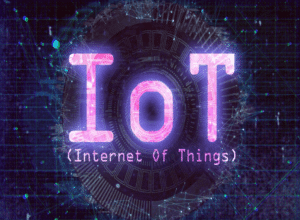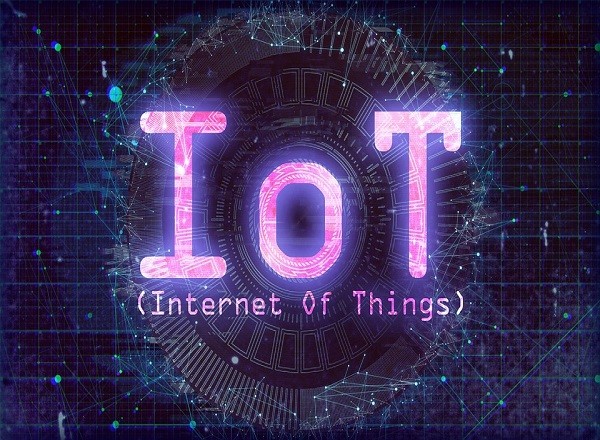Curated by Vinay Prabhakar Minj
About $130 billion new monetization avenues have been created due to IoT-related services. As a result of IoT application, 80 percent of companies have already increased revenues.

“In the next five years, you are going to deal with existential threat,” says the American management consultant Geoffrey Moore.
This statement should be taken very seriously. The market is now changing so dramatically that customers’ expectations are changing too. Today, we all have different expectations and everything is becoming more and more sophisticated.
So, Geoffrey Moore is right again when he says – “if you do not change now, then you will not be there in the business anymore.”
And this has been proven. If the companies who have been in the business for 80-100 years do not change over time, then they will no longer be there in the business. There are a lot of examples of such cases, both locally and globally. The market is changing as well as the customer expectations and experiences. Somewhere this trend is giving a clue on where the market is headed and what’s going to happen next.
Industry is moving and business models are changing
Satya Nadella, CEO, Microsoft, says, “Industry after industry is being transformed as we speak, and that’s the real opportunity for us collectively.” He also says, “This is perhaps more so than ever in our history where technology is not just adding capability but it’s changing business models.”
Impact of Digital Technology
The GDP components impacted by digital technologies today in India is 8 per cent. This itself is a great evidence of how digital technology is playing a role in our lives, in the society, and in our enterprises. But the more fascinating and exciting news is that the impact is going to be 60 percent by 2021.
Today, if you consider the Indian market size on IoT, there are 60 million devices that are already connected to the internet using IoT. By 2020, 1.9 billion devices are going to be connected. This figure is going to be a US$ 15 billion opportunity, just for India by 2020. And we are heading towards that. This is not a hypothetical thing anymore. The power of this technology is going to create a huge differentiation for all of us.
Sectors like utilities, manufacturing, transportation & logistics and automotive have already seen great success for this technology, with double-digit growth. There are certain verticals that are picking up, including healthcare, retail and agriculture. The impact this technology is creating is not for one-two segments, but it is across the industry.
MICROSOFT WILL INVEST US$ 5 BILLION OVER THE NEXT FOUR YEARS ON IOT. THE KEY PRINCIPLES BEHIND THIS INVESTMENT ARE COMPLETELY TOWARDS SECURING END-TO-END.
There is no vertical untouched by this technology. Smart cities, healthcare, manufacturing, logistics, energy and utilities, refining, process manufacturing, oil, and gas, banking and insurance, IOT is there in all now. Improvements are happening and the impact is going to be visible across all these verticals.
IoT is already creating a huge impact. About $130 billion new monetization avenues have been created due to IoT-related services. As a result of IoT application, 80 percent of companies have already increased revenues.
Digital Transformation And its Imperatives
Microsoft believes that there are four imperatives to digital transformation – engage customers, empower customers, optimized operations and transform products.
The first is about customer experience – it is about how you can improve the experience by giving a service based on the right information, or how you will create an experience that will create an impact. Technology, especially IoT, is creating that value part.
Second is, ‘How do you empower your employee? In any industry, empowering of the employees has to start from the rock bottom level of the organisation. That’s where the operators and the supervisors will actually get to know how the technology is going to create an impact and make his/her day productive.
Third is optimizing operations. Whether it is manufacturing, smart cities, healthcare or energy utilities, there is a defined set of operations in every sector. It is important for any industry segment to optimize these operations to get a real-time visibility, cut down the management cost and improve efficiency and productivity.
The fourth aspect to digital transformation is transforming the products. If you are a product company or an industry OEM, then the first thing to know for transforming your product is to understand how customers are utilising your product. Then, you can come up with the best variant depending upon the feedback received from the market (the way customers are using those products and their expectations).
If you combine this data with your current assets, then a lot of things can be done in the engineering and R&D part. By harnessing the power of digital information, you can come up with intelligence and insights that you can apply to transform the product.
Think of a scenario which can create a differentiation for your business, and that’s where you are going to gain the revenue.
How to Capitalize on IoT
There are three things that anybody and everybody can do with IoT – efficiency, innovation and business transformation.
Efficiency – IoT will help cut down the cost of the operations or uptime of the equipment, and thus contributes to cost saving.
Innovation – It refers to how rapid you are with respect to innovation and your products. Your new offerings, new variants and new products have high chances of getting sold in the market if they can create better customer experiences.
Business transformation – By harnessing the power of IoT, companies like Piramal Glass are getting real-time visibility and cutting down on the downtime.
The company has deployed a real-time plant monitoring system at 46 lines across different countries and reduced the manual data gathering by 40 per cent, which enabled them to achieve 25 per cent improvement in employee productivity. They have transformed the entire manufacturing operations using IoT and as an immediate benefit, they have seen a one percent improvement in production efficiency and a five percent reduction in defects.
Not only in private sector, but IoT is creating great impact in the government sector as well. The technology is being used by the Central Pollution Control Board to assess and control pollution levels in the most celebrated river of the country- Ganges.
IoT Connects to the Heart of the Business
Reed Hastings, CEO, Netflix says, “Companies rarely die from moving too fast, and they frequently die from moving too slowly.”
This is a powerful statement, and it is actually happening with the rapid changes in technology. Today, technology has taken over the business. Technology is putting a lot of pressure on business. But you should treat this in a very different way – because it’s all about business powered by technologies.
IoT is not a technology revolution. It is a business revolution enabled by technology. IoT is not new, it is almost 11 – 12 years old. When Microsoft started with embedded systems and used to do robotics, CNC machines and everything, at that time itself we had all of these….capturing signals from these assets and trying to make intelligence and analytics out of it. So, the technology was already there, but it is now creating a business transformation.
According to the technology curve, innovation begins with cloud and moves on to IoT, AI and EDGE.
SO, THE TECHNOLOGY IS THERE. YOU NEED TO BE FOCUSED ON BUSINESS OBJECTIVES AND KEEP MOVING. THE RESULT IS BOUND TO COME.
IoT is possible just because of the cloud and the globally available infrastructure – the compute, the storage, the networking power available, all these are making IoT a reality.
It is not just about harnessing the power of the devices, the assets and the signals, and coming up with intelligence and analytics at the cloud level, but it is also about the ability to move this intelligence from cloud to EDGE. That is so critical in today’s world. Your car is going to become a super-powerful IoT EDGE device in the future. And that gateway is going to create the entire experience from your home to your office (when you are on the road). Intelligent Cloud and Intelligent EDGE are going to play a vital role in future.
IoT and AI are two things that cannot be separated. While IoT harnesses signals from sensors and devices managed centrally by the cloud, AI creates the insights and intelligence out of it.
Once you have the intelligence, how can you spread that intelligence without depending on the Cloud? Specially in India where there is connectivity issue, IoT EDGE is going to play a vital role.
And with EDGE, a hybrid scenario is created where the need is of a particular industry.
IoT Projects Are Complex: How to Simplify it
When it comes to IoT, security is really critical. IoT poses unique security, privacy and compliance challenges. You have to be very sensitive about this aspects when you consider an IoT. And this is the area where many companies are investing heavily.
Next is complexity. There has been a disconnect in IT/OT (Information Technology/Operation Technology). Lack of IT/OT integration will impede efficiencies. So, teams should come together and work as a single team to create business differentiation.
And the last is managing siloed data. Pick up the information which is required and which makes sense for your business. There is no need of moving all your data into the cloud. IoT gives you the ability to connect to those siloed information, irrespective of their OS or protocols. Today companies and their customers and partners are so passionate about IoT because it is going to be the central part of anybody and everybody’s strategy.
The IoT value chain is not a single piece. It is not the software alone. It starts with devices, maybe with security built inside chip, and moves on to machine-to-machine communication. It involves a lot of things like security, connectivity and services. Many partners will come in…consulting partners, system integrators, independent software vendors (ISVs) and auditors who will review your entire IoT engagement from a security standpoint. That is why an enterprise business capability is required to deliver IoT solutions. A single entity is not going to deliver the business transformation using this technology.
Microsoft Investing US$ 5 billion in IoT
Microsoft will invest US$ 5 billion over the next four years on IoT. The vision is to give every customer the ability to transform their businesses and the world at large, with connected solutions. The key principles behind this investment are completely towards securing end-to-end. From device to channel to cloud security, everything will be covered.
Martin Luther King said, “If you can’t fly, then run. If you can’t run, then walk. If you can’t walk, then crawl. But whatever you do, you have to keep moving forward.”
So, the technology is there. You need to be focused on business objectives and keep moving. The result is bound to come.
About the author
The above article is an extract from the speech delivered by Virendra Chaudhari, IoT Sales Head – India, Intelligent Cloud, Microsoft, at IOTSHOW.IN 2019, held in Bengaluru. Giving the keynote address, he gave his perspective on where we are headed with respect to technology and how it is going to impact the business.










